Inspiring EY leaders to be accountable for creating an inclusive culture | Best Practice by EY Switzerland
How do we go about consciously embedding inclusive behaviors into the DNA of our organization? Achieving greater diversity is so much easier if inclusion is a given – but it’s not an easy journey. Disrupting old habits and routines demands focus, effort and patience. Tailored D&I programs have become the norm, yet how do we ensure both relevance to the business and leadership accountability for progress? In other words, how can we truly embed inclusive behaviors into the DNA of an organization? Here is the EY approach.
This best practice was first published in the Gender Intelligence Report 2020.
While EY is making strong progress in attracting and maintaining diverse talent, cultivating a truly inclusive work environment needed a boost. Diversity and inclusion are a top leadership priority and a core value for us. We want to have diverse employees who feel valued and included, safe to speak up and contribute their knowledge or constructively challenge each other’s ideas. Leaders want to advocate for D&I, but do not always know how to tackle the workplace bias and to enable the full potential of their teams. They needed help in understanding what are the conscious and unconscious behaviors that lead to some people feeling included and others excluded.
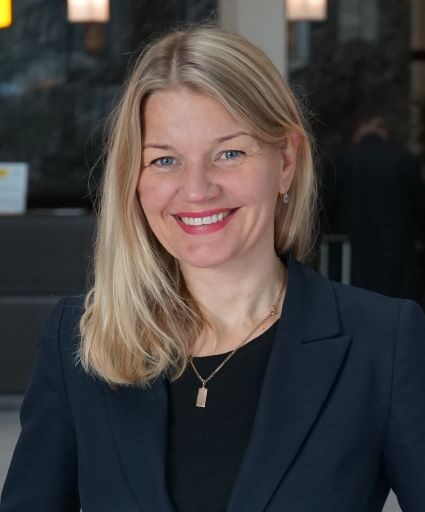
D&I Project Lead, Strategy and Transaction at EY Switzerland
![]()
At EY, we have a new Corporate Strategy called NextWave. To hold leaders and ultimately all employees in Switzerland accountable for creating and embedding an inclusive culture, it was essential to link any development program to our new corporate strategy and values. To this end, we designed, created and launched a new leadership development program called NextWave Transformative Leadership to build both skills and a mindset that help establish an inclusive culture. The NextWave Leadership program is a balance between achieving a ‘Better Me’ and a ‘Better Us’, with a robust focus on six leadership behaviors:
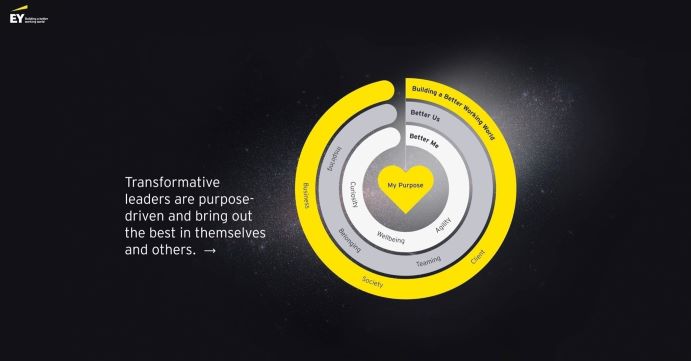
1. Hands-on workshops where the six leadership behaviours are dissected, e.g. curiosity and building trust to create a foundation for inclusivity. Immersive exercises and discussion rounds in the workshops open leaders’ eyes to the impact of non-inclusive and inclusive behaviors and crucially make them want to change their behaviors.
2. Mindset shifting nudges as practical ways to keep concepts alive, e.g. the meeting guideline comprises a collection of inclusive behaviors that lead to better meeting outcomes. This meeting guideline has been placed in each meeting room, was distributed to all leaders and added as background in MS Teams when Covid-19 meant we all had to go online.
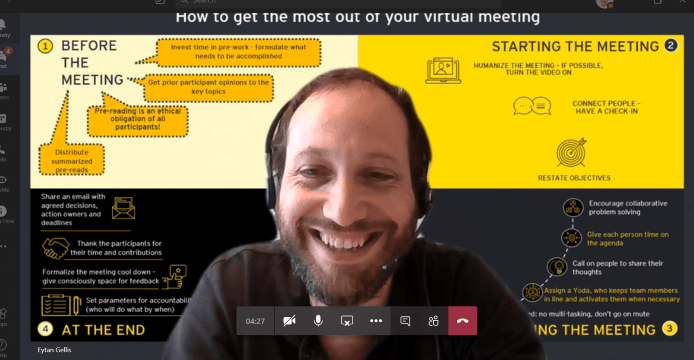
“We are delighted to see the Meeting Guideline in action. It really is a clever nudge tangibly supporting an inclusive working environment.”
Eytan Gellis, Cultural Transformation Lead at EY
3. Continuous and consistent change reinforcement through follow-ups, self-reflection surveys and learning ‘snacks’ – 1-minute nuggets to make leaders ask themselves what am I embedding of the learning? They are emailed further resources like an episode from the Coaching for Leaders series that discusses how to stay curious a little longer and rush to action and advice-giving a little more slowly.
Securing executive leadership support and business ownership are as essential as solid data and creating a sense of urgency and will for change. We recommend applying agile principles where development happens module by module and allows for ongoing improvements. Finally, it is important to define meaningful KPIs for the program to measure its impact on increasing employee engagement.
In the first phase of the Program we targeted 600 leaders – Senior Managers and above – in Switzerland and trained nearly 400 of them in 14 Workshops. These took place from February through June starting face to face and moving to virtual as COVID hit. As a result, we not only built capabilities that help to establish an inclusive work environment but also taught our leaders how to stay connected with their teams during pandemic and beyond.
The positive impact first became visible as we started to receive notes from stakeholders expressing appreciation and desire to get actively involved in the program:
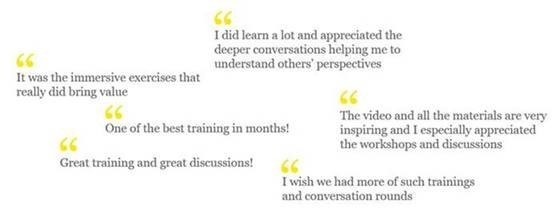
The set KPI was to improve our employee engagement, specifically in the ar eas of belonging i.e. people feeling they can be themselves, that it is safe to speak up and that they are able to make meaningful contributions. How well we are doing against this KPI will become evident after our next Global People Survey. As the survey results are visible per service line, respective leaders will be held accountable for improvements in their teams.
Transforming organizational culture to harness the full benefits of diversity is not an easy journey, yet once you have set out on it, you will soon see signs of true impact encouraging you to keep moving with even more focus and confidence in taking bold actions.
We would be delighted to share our experience and lessons learned with you. Please do not hesitate to reach out to Robin Errico, our D&I Lead, or Margit Vunder D&I Project Lead.
This best practice was first published in the Gender Intelligence Report 2020.
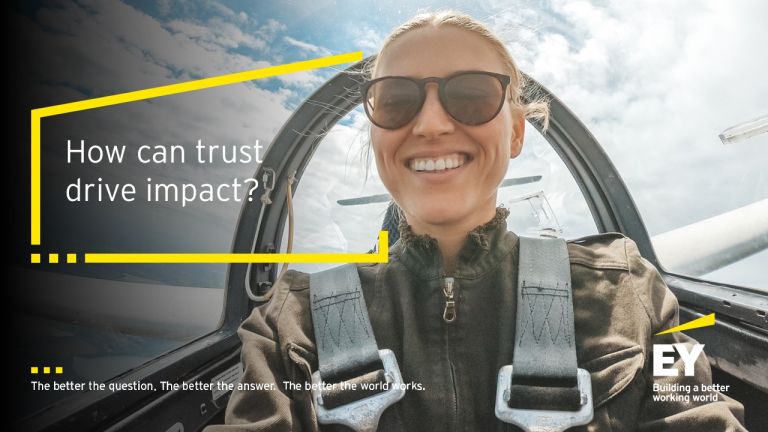
If CEOs are value-driven they make Diversity, Equity, and Inclusion a strategic focus area. By trusting and supporting their leaders to authentically champion these initiatives, the organization is able to foster a positive culture, improve performance, and achieve success.
When leaders are empowered to pursue their beliefs and values, they can lead with authenticity, integrity, and purpose, resulting in positive impacts on the organization.
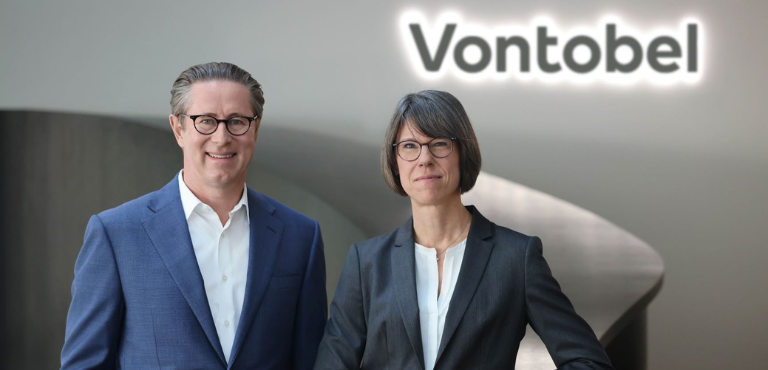
Vontobel's new co-CEOs prioritize collaboration and diversity, implementing "One Vontobel" model to break silos. Their inclusive approach fosters innovation, diverse perspectives, and better outcomes in the fast-paced financial market.
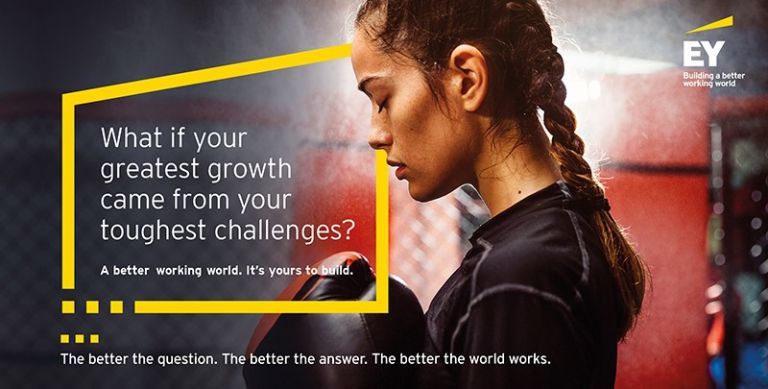
An honest assessment of what a 'leader' looks like challenges the status quo and creates the climate for women to thrive.

A deep dive into the male and female perceptions of gender equality at work leads to open dialogue, higher engagement and critically: changing the appraisal process.

48% of all PM Switzerland’s management level employees were women in 2020, smashing the target of 40% by end 2022.

Change doesn’t happen overnight but by integrating top & grassroots initiatives @Citi successfully builds an inclusive culture.

Leaders insisting on pay equity and undertaking serious independent analyses builds trust and a culture of inclusion.
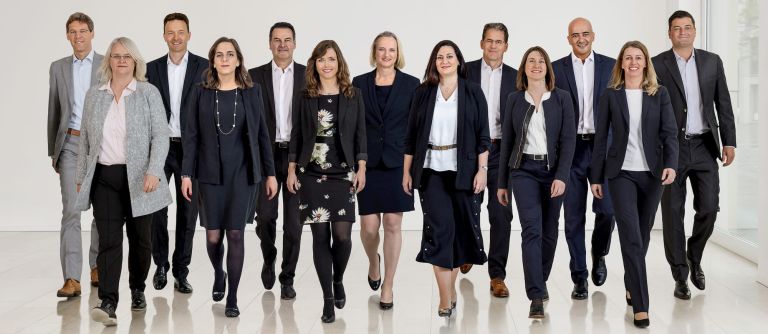
The CEO and senior leaders publicly advocate diversity and inclusion as business imperative.